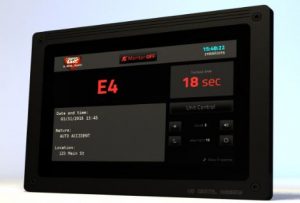Lincoln: Installing a New Phoenix G2 Fire Station Alerting System
 With population growth comes increased calls to first responders. Such is the case in Lincoln, Nebraska, where there’s been a 300% increase in call volume over the last 20 years. With 14 stations to handle the call load and the city building five more in the near future, department members needed something to help ease the dispatchers’ workloads while also decreasing the time it took stations to respond to 911 calls. This is where RACOM technology came into the picture.
With population growth comes increased calls to first responders. Such is the case in Lincoln, Nebraska, where there’s been a 300% increase in call volume over the last 20 years. With 14 stations to handle the call load and the city building five more in the near future, department members needed something to help ease the dispatchers’ workloads while also decreasing the time it took stations to respond to 911 calls. This is where RACOM technology came into the picture.
RACOM professionals have worked with Lincoln Fire Department members for nearly three decades, and this was why Battalion Chief Eric Jones was so excited to work with them as they implemented the Phoenix G2 Fire Station Alerting System from U.S. Digital Devices.
“We’re a pretty busy system here,” says Jones, “and there’s lots of times where multiple dispatches go out.”
Upgrading the system
 Thanks to a $600,000 Federal Emergency Management Agency (FEMA) grant, Jones could accept bids for a new alerting system, and the RACOM team came in with the devices and the experience Jones needed.
Thanks to a $600,000 Federal Emergency Management Agency (FEMA) grant, Jones could accept bids for a new alerting system, and the RACOM team came in with the devices and the experience Jones needed.
“We had a long history with RACOM, and we were really excited in working with them on the new project,” Jones explained.
Jones said he likes the Phoenix G2 because of the computer voice — dubbed Samantha — which sends first responders to their calls when physical dispatchers have their hands full. The fire station alerting system is always on, and the artificial-intelligence-based voice is quite clear, thanks to its delivery over IP instead of radio. In addition, responders can see call information displayed on HDTV screens in their stations. Once a station is alerted, a wall timer informs them how long it takes to arrive at the call. Jones says he’s seeing big response time improvements with the new system.
Installation
Jones says the RACOM crew installed the system in coordination with U.S. Digital Devices, and although fire station alerting is a technical and complex task, Jones says RACOM brought a lot of experience and organization to the project.
“From day one, the priority of RACOM is the satisfied customer,” Jones says.
Because of the grant process, he says time was short for this project. RACOM and U.S. Digital developed a timeline for the project and completed it with enough time to give Jones and his stations one month to fully test the alerting system before it went live.
However, he wouldn’t advise this hectic schedule for other stations.
“Shoot for 18 months,” Jones says when it comes to designing a system, bidding, and working with a vendor. “What’s more realistic is a couple of years.”
As for testing, Jones recommends a three-month period with the new system in full operation parallel to the existing system.
[cta]Call RACOM experts at 800-722-6643 or email us at info@racom.net to learn more about the RACOM Network and how it can help you.[/cta]
